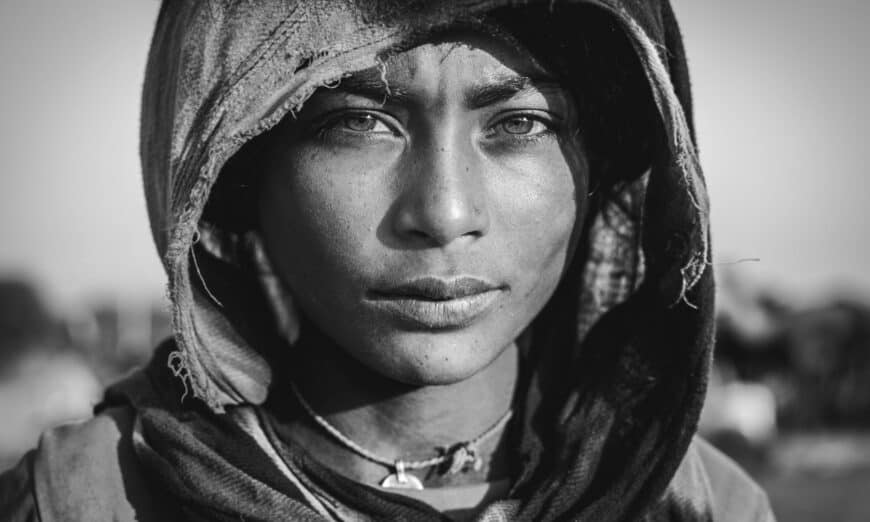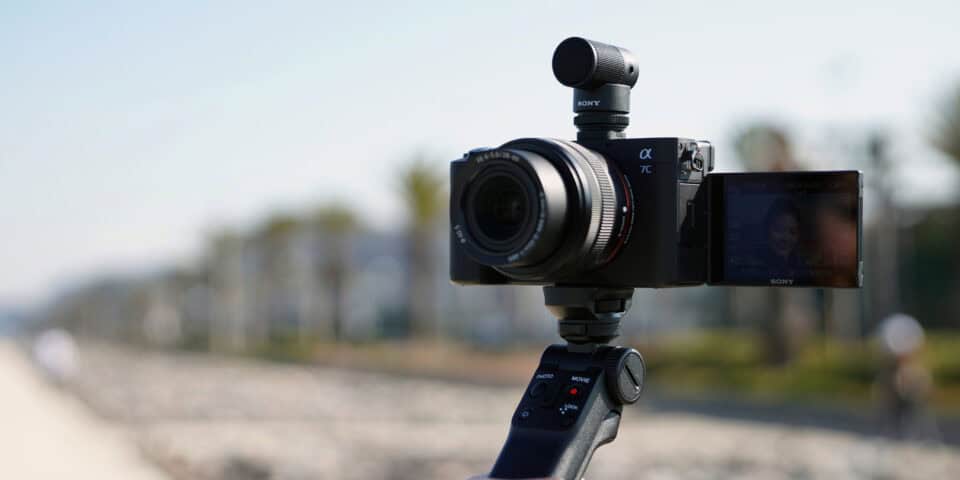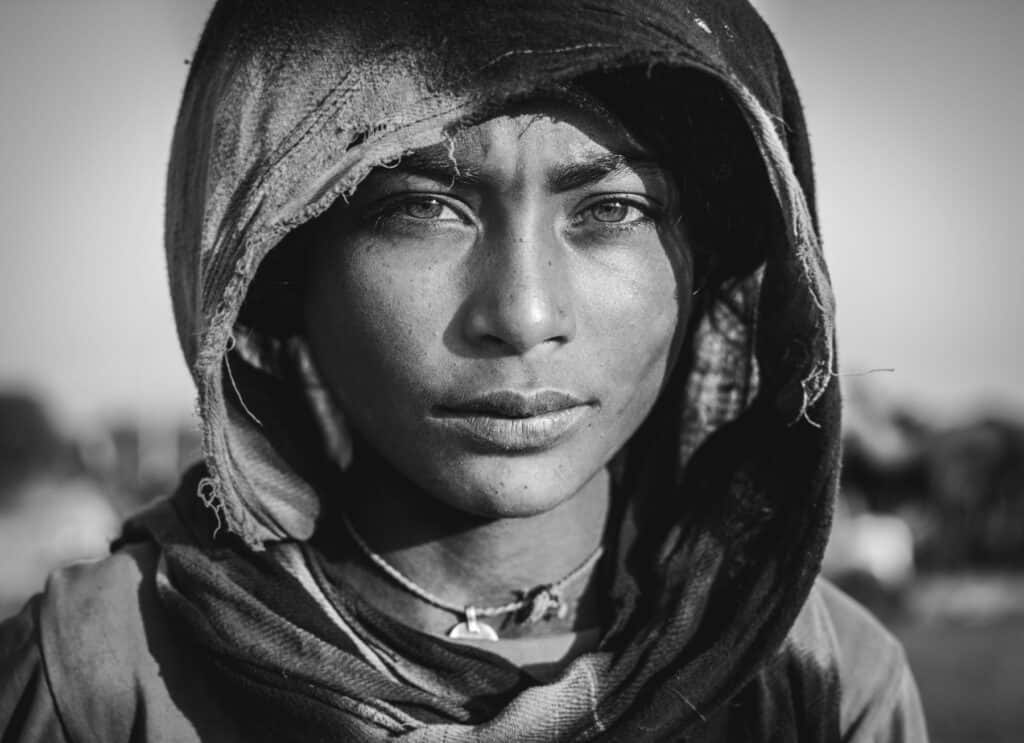
Portrait photography is an art form that captures the essence of a person, revealing their personality and emotions through imagery.
Whether you’re a beginner or a professional photographer, understanding the nuances of portrait photography can significantly enhance the quality of your photos.
In this blog, we’ll explore essential tips and tricks for staging, shooting, and editing portraits, followed by gear recommendations tailored for all skill levels from brands like Sony, Nikon, Canon, Fujifilm, and Sigma.
Read below to discover tips and tricks, recommended camera gear for every photographer, and camera and lens options for beginners through professional-level photography.
Tips and Tricks for Successful Portrait Photography
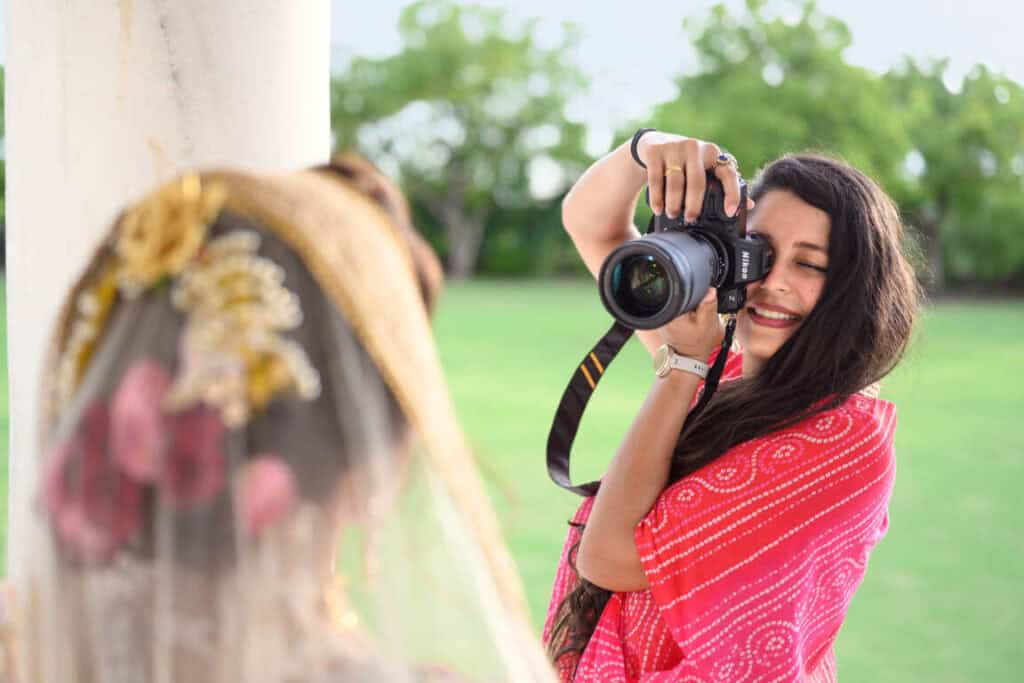
The 10 Rules of Portrait Photography
Portrait photography is guided by several fundamental “rules” or best practices that help photographers capture more engaging and aesthetically pleasing images. Here are some of the key rules along with brief explanations for each:
- Rule of Thirds:
- This rule involves dividing the image using two horizontal and two vertical lines, creating nine equal segments. Placing the subject along these lines or at their intersections makes the photo more balanced and enables a more natural viewing experience. For portraits, aligning the subject’s eyes with the top horizontal line is particularly effective.
- This rule involves dividing the image using two horizontal and two vertical lines, creating nine equal segments. Placing the subject along these lines or at their intersections makes the photo more balanced and enables a more natural viewing experience. For portraits, aligning the subject’s eyes with the top horizontal line is particularly effective.
- Eye Contact:
- Direct eye contact can connect the subject with the viewer, creating a strong emotional impact. It’s not always necessary for the subject to look straight at the camera; they can also be looking at something within the frame, which can add intrigue to the image.
- Direct eye contact can connect the subject with the viewer, creating a strong emotional impact. It’s not always necessary for the subject to look straight at the camera; they can also be looking at something within the frame, which can add intrigue to the image.
- Focus on the Eyes:
- The eyes are often said to be the “window to the soul”, making them the focal point in most portraits. Ensuring the eyes are sharp is crucial, as slightly out-of-focus eyes can make an otherwise good portrait feel off.
- The eyes are often said to be the “window to the soul”, making them the focal point in most portraits. Ensuring the eyes are sharp is crucial, as slightly out-of-focus eyes can make an otherwise good portrait feel off.
- Use of Aperture:
- Controlling the depth of field through aperture settings is vital in portrait photography. A wider aperture (lower f-number) produces a shallower depth of field, which helps blur the background and keeps the focus sharply on the subject, emphasizing their features.
- Controlling the depth of field through aperture settings is vital in portrait photography. A wider aperture (lower f-number) produces a shallower depth of field, which helps blur the background and keeps the focus sharply on the subject, emphasizing their features.
- Simple Background:
- A cluttered or overly busy background can distract from the subject. Using a simple or blurred background helps ensure that the subject stands out. This can be achieved by positioning the subject at a sufficient distance from the background and using a longer focal length or a wider aperture.
- A cluttered or overly busy background can distract from the subject. Using a simple or blurred background helps ensure that the subject stands out. This can be achieved by positioning the subject at a sufficient distance from the background and using a longer focal length or a wider aperture.
- Lighting:
- Good lighting is key to capturing great portraits. Soft, diffused lighting tends to be flattering for the subject, reducing harsh shadows and highlights. Natural light, especially during golden hours (shortly after sunrise or before sunset), is often preferred. However, understanding how to manipulate artificial lights and reflectors can also enhance portrait quality.
- Good lighting is key to capturing great portraits. Soft, diffused lighting tends to be flattering for the subject, reducing harsh shadows and highlights. Natural light, especially during golden hours (shortly after sunrise or before sunset), is often preferred. However, understanding how to manipulate artificial lights and reflectors can also enhance portrait quality.
- Framing and Composition:
- Proper framing and thoughtful composition can significantly impact the effectiveness of a portrait. This might involve using natural elements like doorways or windows to frame the subject or adjusting the composition to include or exclude elements that tell a story about the subject.
- Proper framing and thoughtful composition can significantly impact the effectiveness of a portrait. This might involve using natural elements like doorways or windows to frame the subject or adjusting the composition to include or exclude elements that tell a story about the subject.
- Expression and Pose:
- The subject’s expression and pose should reflect the mood and theme of the portrait. Directing the subject to change their pose or expression can bring dynamism and depth to the photo, making it more compelling.
- The subject’s expression and pose should reflect the mood and theme of the portrait. Directing the subject to change their pose or expression can bring dynamism and depth to the photo, making it more compelling.
- Colour Harmony:
- The colours in the portrait should complement the subject. This includes the choice of background, the subject’s clothing, and any props. Colour harmony can enhance the mood of the portrait and draw the viewer’s attention to focal areas.
- The colours in the portrait should complement the subject. This includes the choice of background, the subject’s clothing, and any props. Colour harmony can enhance the mood of the portrait and draw the viewer’s attention to focal areas.
- Editing and Post-Processing:
- Post-processing is a powerful tool to enhance portrait photography. It can be used to correct colours, adjust contrasts, and retouch imperfections. However, it’s important to keep edits realistic and maintain the natural features of the subject.
These rules serve as guidelines and starting points for creating engaging portraits. However, creativity and experimentation are also essential aspects of photography, and occasionally breaking these rules can lead to uniquely powerful images.
Recommended Staging and Composition for Portrait Photography:
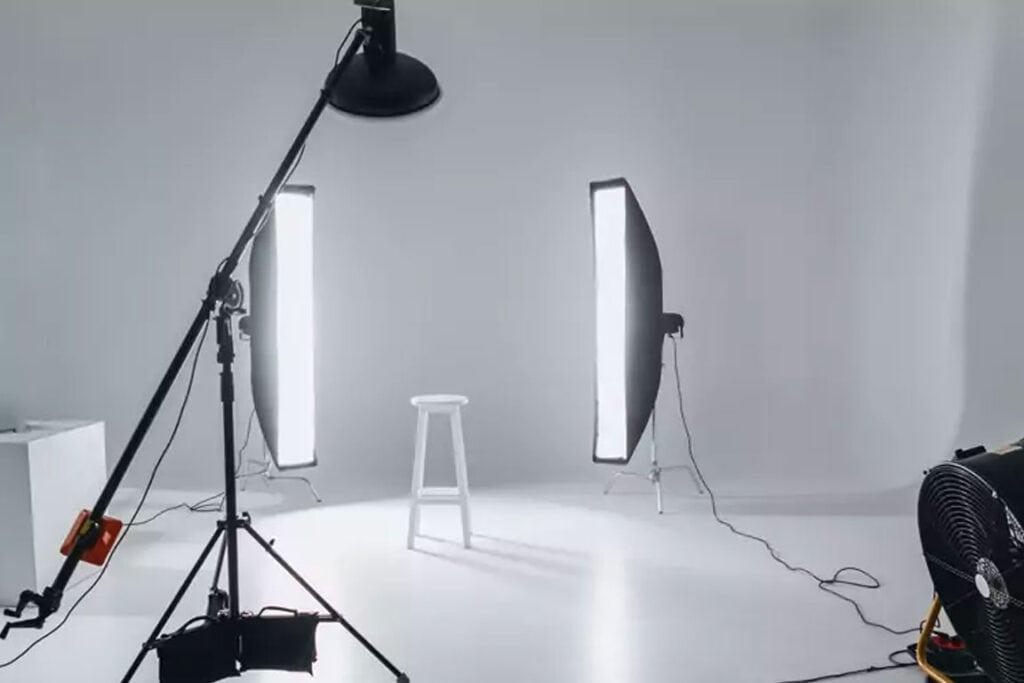
As you dive into the world of portrait photography, it’s essential to start with some foundational staging and composition techniques that can elevate your shots.
Mastering these can be your first steps toward capturing truly striking portraits. Here are a few simple yet effective strategies to help you hone your skills and experiment creatively:
- Choose the Right Background: Select backgrounds that are simple and free of clutter to ensure your subject remains the focal point. Neutral tones and subtle patterns tend to complement the subject without competing for attention.
- Utilize Natural Light: Natural light can dramatically enhance the quality of your portraits by providing a soft, flattering illumination. Try to position your subject near a window or outdoors during golden hours—shortly after sunrise or before sunset—when the light is warm and diffused.
- Experiment with Angles: Don’t hesitate to play with different shooting angles to discover what looks best for your subject. While eye-level shots are a safe bet, shooting from slightly above can enhance the eyes and give a more intimate feel to your portraits.
These tips are not just techniques but pathways to understanding light, composition, and the subtle nuances that make portrait photography an art. Practice these fundamentals regularly, and you’ll see your portraits improve with each session.
Camera Settings and Techniques:
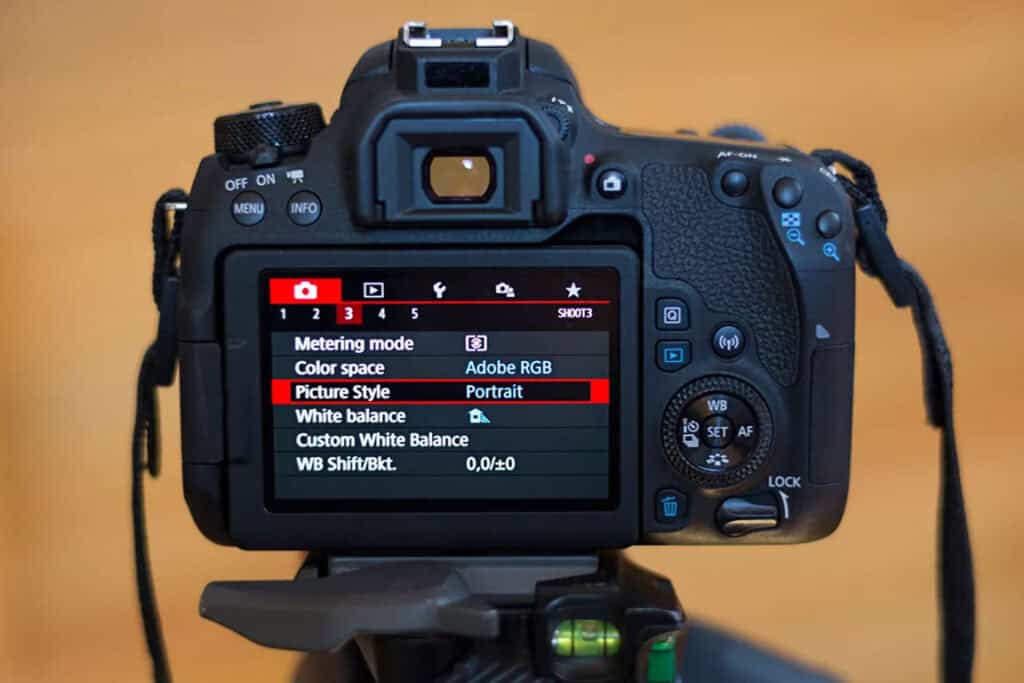
Today’s cameras are equipped with advanced features like smart AI, precise autofocus, and dedicated portrait modes, all designed to enhance your photography experience. Starting with these automated settings can significantly simplify the process, especially for beginners.
As you become more comfortable with your camera, transitioning to manual settings allows greater control over the final image, enabling you to capture more professional and nuanced portraits.
Here are some essential manual settings to experiment with:
- Aperture: Opt for a wide aperture (low f-stop number) to achieve a shallow depth of field. This setting helps blur the background, drawing attention directly to your subject, which is especially effective in portrait photography.
- Shutter Speed: Maintain a shutter speed of at least 1/200th of a second to avoid motion blur. This speed is crucial when capturing dynamic expressions or movements, ensuring sharp images.
- ISO: Start with the lowest possible ISO to minimize noise in your images. Increase the ISO only as needed to ensure your photo is well-exposed without compromising on quality.
- Focus: Precision in focusing is key; always aim to focus on the eyes, the most expressive part of the face. This ensures that the most important elements of your portrait are sharp and clear.
Mastering these settings will not only improve your technical skills but also enhance your ability to express your creative vision through photography.
Post-Processing:
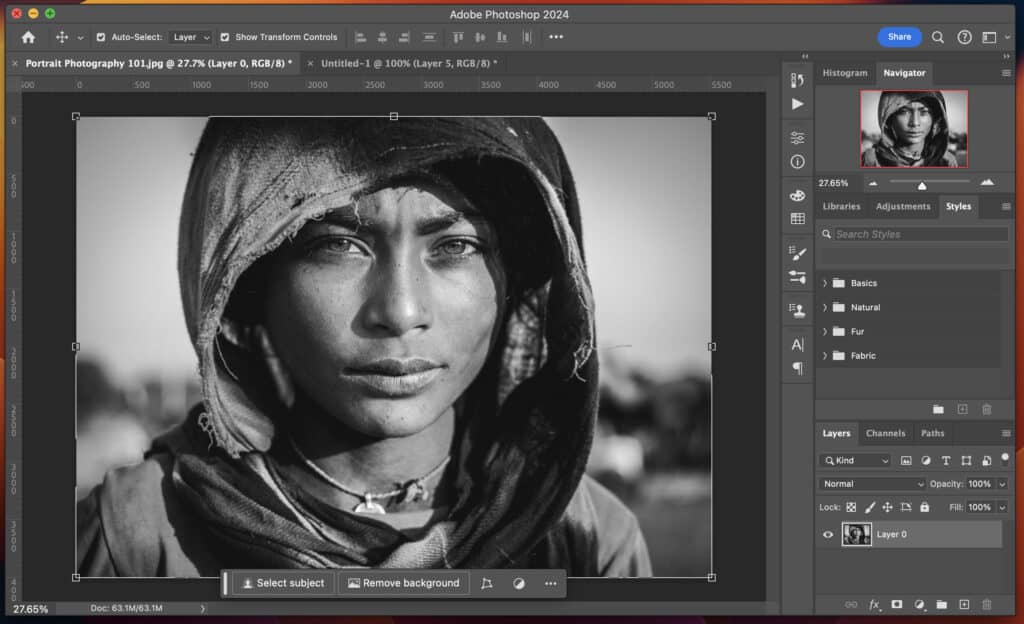
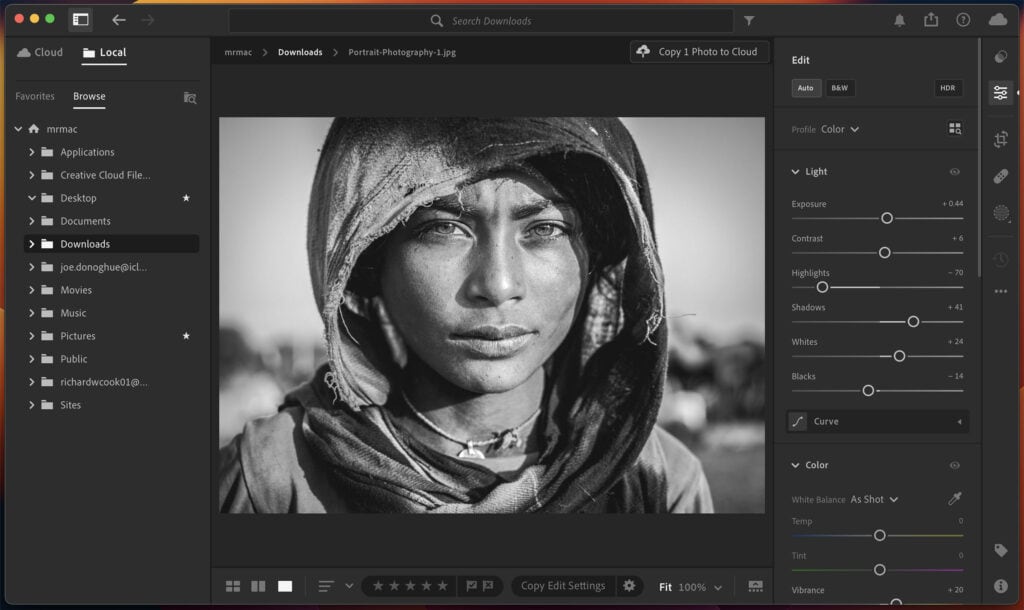
There’s a wide array of post-editing applications available for portrait photographers, ranging from free options to more advanced, subscription-based platforms.
For those just starting out, free software like GIMP (GNU Image Manipulation Program), darktable, LightZone, and Photopea provide robust tools to get started with photo editing.
More seasoned photographers often prefer professional-grade programs such as Adobe Lightroom and Adobe Photoshop, which offer extensive editing capabilities and advanced control over images.
Essential Post-Processing Tips for Portrait Photography:
- Retouching: Utilize photo editing software to tactfully clean up blemishes and refine your portraits. The goal is to enhance the photo subtly so that it remains natural-looking. Tools like the healing brush and clone stamp are invaluable for this purpose.
- Colour Grading: Adjusting the colours in your portrait can dramatically affect the mood and feel of the image. Use colour grading to enhance the natural tones of the skin, background, and clothing, or to create a specific atmosphere that complements your subject.
- Cropping: Thoughtful cropping can significantly improve the overall composition of your portraits. It helps to focus attention on the subject, enhance the portrait’s impact, and eliminate any distracting elements from the background or edges of the frame.
These post-processing techniques are fundamental for transforming good portraits into great ones, giving them a professional finish that stands out in any portfolio.
Recommended Portrait Photography Camera Gear
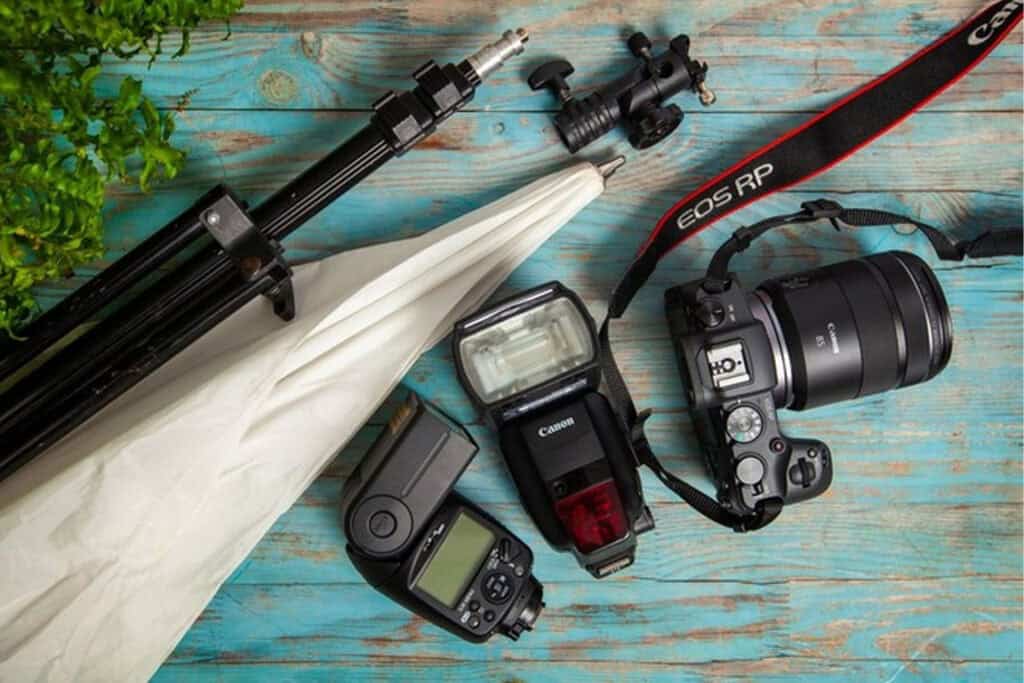
Choosing the right camera is fundamental to achieving professional-quality portraits. In this section, we recommend top camera models from leading brands like Sony, Nikon, and Canon, tailored to suit various levels of expertise—from beginners to professionals.
Each camera is chosen for its superior image quality, versatility in settings, and ease of use, ensuring that photographers can capture stunning, lifelike portraits in any setting. Whether you’re just starting out or are looking to upgrade to a more advanced model, these cameras offer the features and performance necessary to excel in portrait photography.
Beginner Cameras:
- Canon EOS Rebel DSLR Series: A user-friendly DSLR with great image quality and a helpful guide mode for beginners.
- Canon EOS R100 Mirrorless Camera: An accessible entry into mirrorless technology, offering intuitive controls and impressive image quality, ideal for those starting in portrait photography.
- Nikon Z30 Mirrorless Camera: Known for its compact size and ease of use, perfect for those new to mirrorless cameras.
- Nikon D7500 DSLR: A versatile DSLR that combines robust handling and advanced features, suitable for beginners ready to explore more creative options.
- Sony α6100 Mirrorless Camera: A lightweight mirrorless camera with fast autofocus and excellent image quality, great for capturing stunning portraits.
- Fujifilm X-T30: Offers unique colour reproduction technology and advanced features in a compact body, making it a favourite among beginner portrait photographers.
Intermediate Cameras:
- Nikon Z50 Mirrorless Camera: Offers a blend of high image quality, speed, and a robust feature set suited for serious enthusiasts looking to delve deeper into portrait photography.
- Canon EOS 90D DSLR: A powerful DSLR with high resolution and fast performance, ideal for intermediate photographers aiming to refine their portrait techniques.
- Canon R10: A dynamic mirrorless option that brings advanced autofocus and video capabilities to intermediate photographers focusing on detailed portraits.
- Sony α7 II Mirrorless Camera: An affordable full-frame camera with superb image stabilization and high-quality imaging, excellent for portrait photographers looking to capture stunning detail.
- Nikon X-S20: Balances high-resolution output with user-friendly features, ideal for intermediate photographers eager to experiment with different portrait styles.
Professional Cameras:
- Nikon D850 DSLR: A high-resolution DSLR that excels in detail and colour accuracy, perfect for studio and outdoor portraits.
- Nikon Z7 Mirrorless Camera: Delivers outstanding resolution and dynamic range, making it ideal for professional portrait photographers who demand the best in image quality.
- Canon EOS 5D Mark IV DSLR: A full-frame DSLR beloved by professionals for its versatility and superior image quality, especially in portrait settings.
- Canon R6 Mirrorless Camera: Provides incredible low-light performance and advanced image stabilization, perfect for capturing vivid portraits in various lighting conditions.
- Sony α7R V & IV Mirrorless: Full-frame mirrorless cameras with exceptional resolution and high dynamic range, ideal for professional portrait photographers seeking to capture the finest details.
- Sony α9 III Mirrorless: Combines blazing speed with impressive autofocus capabilities, suitable for capturing dynamic portraits and high-end fashion photography.
Portrait Lenses:
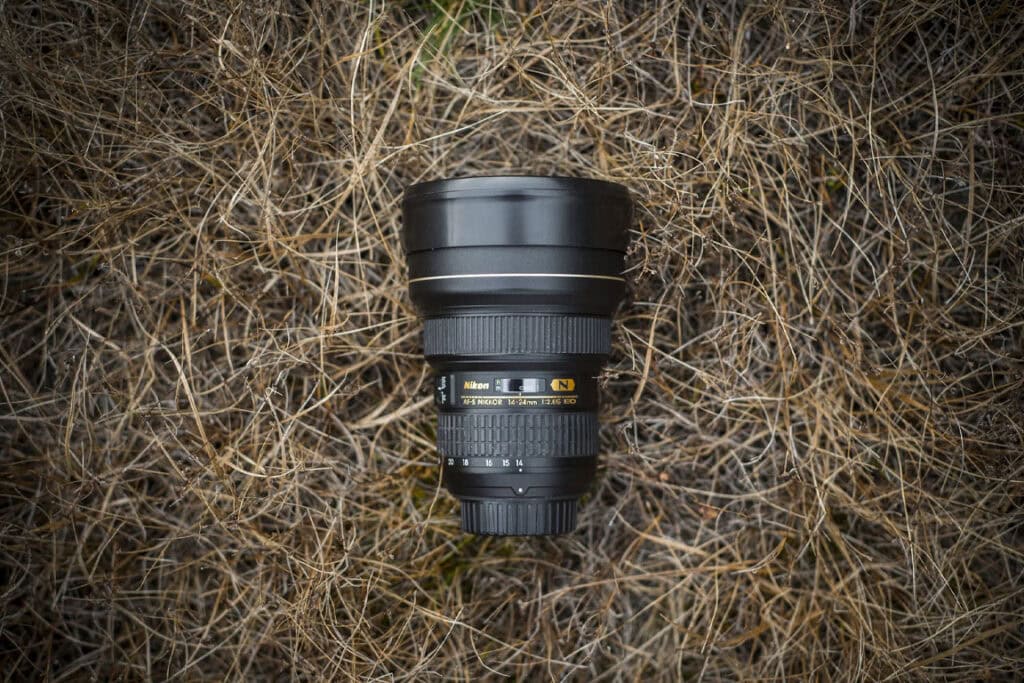
In portrait photography, the choice of lens is crucial as it greatly affects the look and feel of your final images. Here, we recommend top portrait lenses from Canon, Nikon, Sony, and Sigma.
Each lens is selected for its excellent performance in creating sharp, detailed portraits with beautiful background blur, enhancing both the subject and the overall composition.
Whether you’re a beginner or a seasoned professional, these lenses provide the optical quality and reliability needed to elevate your portrait photography.
Beginner Lenses:
- Canon EF 50mm f/1.8 STM: Affordable and lightweight with a fast aperture for a beautiful bokeh effect.
- Nikon AF-S DX 35mm f/1.8G: Provides a natural perspective suitable for beginners.
- Sony E 50mm f/1.8 OSS: Ideal for Sony mirrorless users, offering optical stabilization and a pleasing focal length.
- Sigma 30mm f/1.4 DC HSM Art: A great third-party option for crop sensor cameras, offering excellent sharpness and a fast aperture.
Intermediate & Professional Lenses:
- Canon EF 85mm f/1.8 USM: A classic portrait lens with fast focusing and a flattering focal length.
- Nikon AF-S 85mm f/1.8G: Known for its sharpness and bokeh, perfect for more serious portrait work.
- Sony FE 85mm f/1.8: Compact and sharp, with a fast aperture that’s ideal for Sony full-frame cameras.
- Sigma 50mm f/1.4 DG HSM Art: Offers excellent optical quality and a versatile focal length
Essential Camera Gear for Portrait Photography
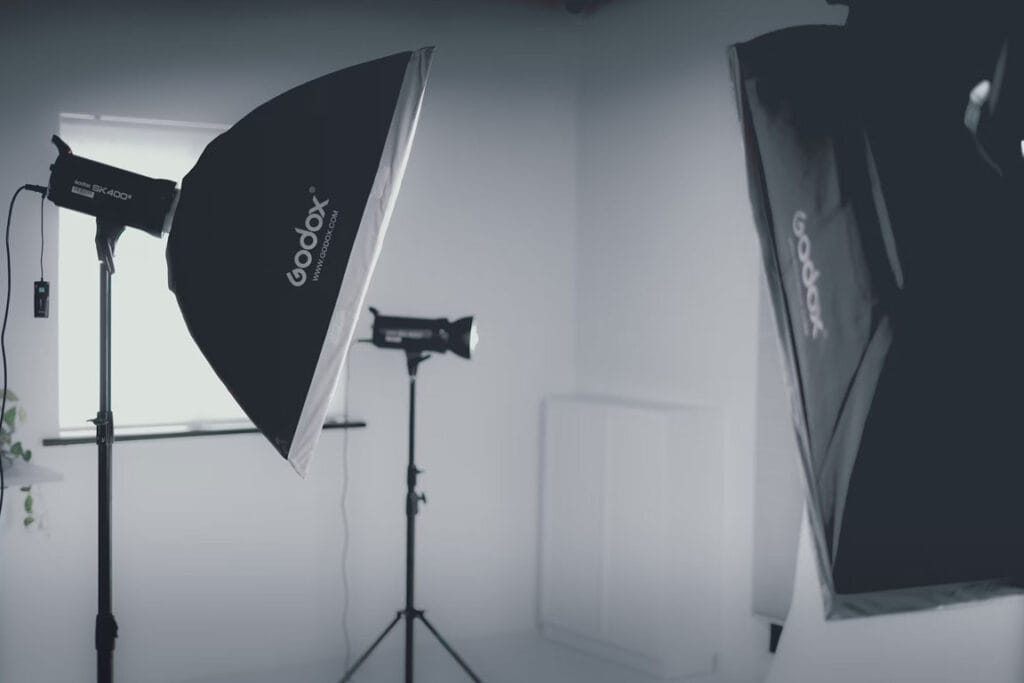
Below is a list of essential camera gear for any portrait photographer. This equipment will help you enhance your photos by improving stability, lighting, and composition.
Whether you’re working in a studio or on location, these recommended accessories are crucial for capturing professional-grade portraits.
Tripods: Key for stabilizing shots, especially in low light, tripods allow for precise framing and flexibility.
Lighting Tools:
- Softboxes and Umbrellas: Diffuse light for a softer, flattering effect.
- Reflectors: Fill in shadows, perfect for outdoor shoots.
- Camera Flash: Essential for adding or controlling light, particularly in darker environments or for creating dramatic effects.
Lens Filters:
- Polarizing Filters: Reduce glare and enhance colours.
- Neutral Density Filters: Control light intake, allowing for wider apertures in bright conditions.
Additional Accessories:
- Remote Shutter Release: Minimize camera shake and engage more with your subject.
- Backdrops: Create controlled backgrounds for studio portraits.
Enhance your photography with essential gear available at Henry’s, where you can also receive expert advice.
Don’t forget to follow us on social media for more tips and visit our retail locations for personalized support.
Whether you’re a beginner or a pro, Henry’s has everything you need to elevate your portrait photography.
Explore
- Take Advantage of 0% Financing
- Find a Henry’s near you
- Learn about Henry’s Trade-and-Upgrade Program
- Protect your purchase with Henry’s Extended Life Plan
- Your Top Three Portrait Photography Questions, Answered
- Three Tips for Better Portraits Outdoors
- Spotlight on Creativity: The Artistic Journey of Emily Bruno
- Environmental Portraiture
